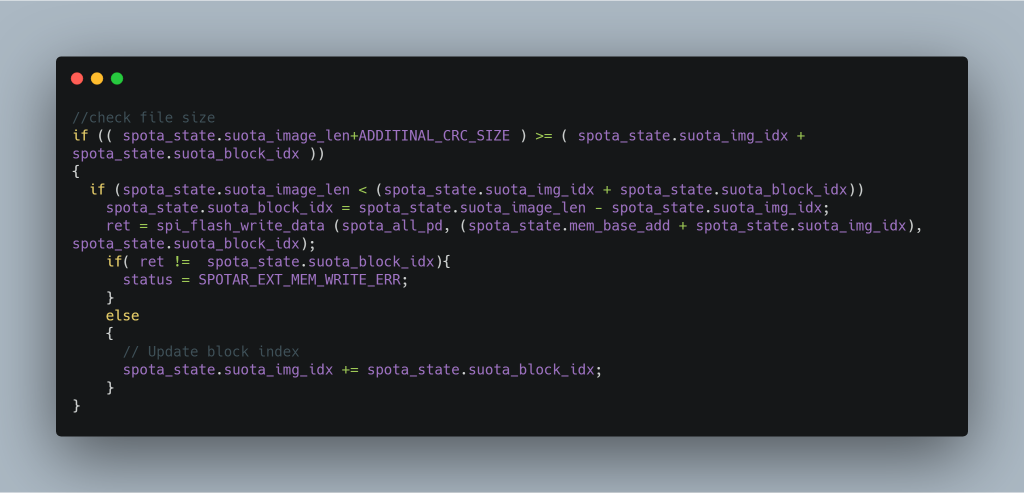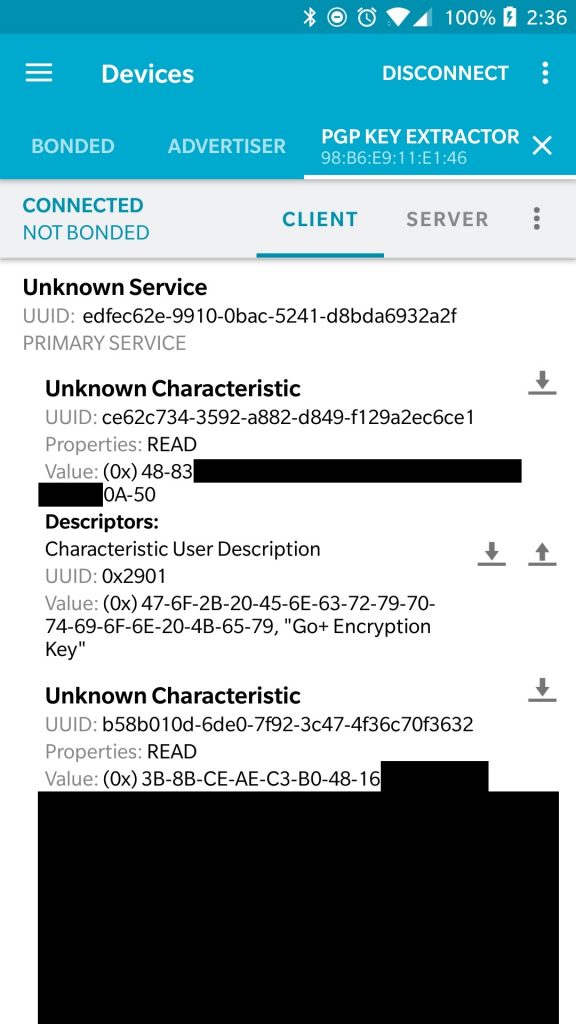It has been almost 6 months since I published my Pokemon Go Plus finding and so far no one has published their Pokemon Go Plus Key. One of the reason is the difficulty in extracting the key from OTP (one time programmable) memory that requires precision soldering. Few weeks after I wrote my article, I posted an idea to /r/pokemongodev to extract a Pokemon Go Plus key using over the air (OTA) update.

The idea was based on two things:
- We can flash any image using SPI Flasher, and there is no signature check, we just need a correct checksum.
- The SPI flash contains two copies of the same firmware (there are 2 firmware banks). This is important for OTA: in case the firmware was not transferred correctly, the bootloader (located in OTP) will boot the other valid firmware
And the plan was this:
- Create our new custom firmware
- Flash the new firmware to the Pokemon Go Plus over the air to Bank 1. At this point there will be two firmware: our firmware and the pokemon go plus firmware
- Extract the key via BLE (Bluetooth Low Energy) using the new firmware
- Restore the original firmware by sending a special request to the new firmware. This is done by reading the original firmware on bank 2 and overwriting our firmware in Bank 1.

Unfortunately, I don’t have time to implement it. I don’t have DA14580 development board so I won’t be able to debug it properly via JTAG. I don’t feel like buying 40 USD for a board that I will only use for this project. I got about 30 USD in donations which I use to buy another Pokemon Go Plus clone, it has the same Bluetooth MAC address. (Note that money wasn’t really the problem, I just like to spend it on something that I like, for example, I just recently bought Nvidia Jetson Nano and a Stereo Microscope)
Two months ago a Reddit user jesus-bamford contacted me, mentioning that he will implement the idea I proposed. Everything seems to work according to plan:
- He can create a firmware that can extract the key from OTP
- He can write his firmware using SPI flasher
- He can send his firmware over the air (using Android App provided by Dialog Semiconductor)
But this is where the good news ends: if the firmware is written using OTA, it won’t boot. The bootloader thinks the firmware is invalid and it will boot the original copy of the Pokemon Go Plus firmware. He found out that there is an extra check in the Software Update that was added, that is not in the source code provided in the DA14580 SDK. But he can’t figure out what is the check or how to bypass it.
During the Songkran Holiday in Thailand, I have some free time so I tried to reverse engineer the boot loader. He is right, there is an extra check added:
- When the update process is started, a flag is set to indicate that this firmware image is not yet valid. In case of a failed update, the bootloader can bot the other valid firmware. During this process, an SHA256 hash is initialized
- For every incoming data that is written to SPI flash, the hash is updated
- At the end of the update, a signature check is performed based on the SHA256 AND some data from OTP. If everything is valid, then the firmware image is set to valid.
I didn’t go into detail on the signature check algorithm, I know it uses big number computations, probably RSA but I didn’t verify it. I also don’t feel that I will find a bug there. What’s important is what happens next: if the signature is valid then a flag is set to indicate that the image is valid.
So to be clear:
- If we modify a firmware using SPI flasher, we just overwrite existing firmware and the valid flag is kept on
- If we modify a firmware using OTA, we need it to be set as valid at the end of the update process
I know one thing for sure: the update process also requires a specific key from the OTP area. So if there was ever going to be an update from Niantic, that update requires a connection to their server to get a special key from them.
So let’s go back and see if there is another way to set the image to be valid. This is the original source code inside app_spotar_img_hdlr.c in the DA14580 SDK:

The compiled binary has an extra call to update the SHA256, but its not important for now. Lets focus on just this one line:
ret = spi_flash_write_data (spota_all_pd, (spota_state.mem_base_add + spota_state.suota_img_idx), spota_state.suota_block_idx);
The variable spota_all_pd contains data sent from the updater app. The second parameter specifies where to write the data (the address in SPI block) and the third parameter is the size.
Visually, we can see that mem_base_add points to the beginning address in the SPI flash, and suota_img_idx points to the current block.

When the write is succesful we increment the address through:
spota_state.suota_img_idx += spota_state.suota_block_idx;
It seems to be fine. I looked for possible buffer overflows for code execution and I couldn’t find one. But what if we can modify spota_state.mem_base_add then we will be able to write anywhere in the SPI flash, including in the image valid flag.
I found a function called: app_spotar_read_mem which is supposed to be called after we finished writing all of the data. This is also where the final check is performed before writing,
This code is very strange: instead of using a temporary variable it uses: spota_state.mem_base_add to store a temporary value to be used for setting spota_state.suota_image_bank. When spota_state.mem_base_add is greater than 2 this function will fail.
And this is exactly what we need: a way to modify mem_base_add. So what we need to do is:
- Send data via OTA as usual, and this will be written to SPI as expected
- Before sending the last part of the data, send a request such that
app_spotar_read_memis called, and set the mem_base_add to the beginning of our firmware header, where the valid flag is - Send the last part of the data, which will overwrite the firmware header. This last data is the header that we want

And that’s the idea. Jesus-bamford did a great job implementing this idea and I was so happy that it works. Here is his software in action. The firmware is already open source at:
https://github.com/Jesus805/PGP_Suota
But the updater is not yet ready for release. He is currently reimplementing the OTA software for Android because his current code is based on the SDK code. When he is finished, anyone should be able to extract their Pokemon Go Plus key without opening it.

I know that I should probably wait until his work is finished before publishing this, but I am also hoping that others can help him. May be implement the update for different iOS, or start working on implementation of Pokemon Go Plus for other devices.
It might also be possible to implement the Pokemon Go Plus using EdXposed (this is a fork of XPosed that works with Pokemon Go) or by adding a library to the iOS version that intercepts the BLE API calls.